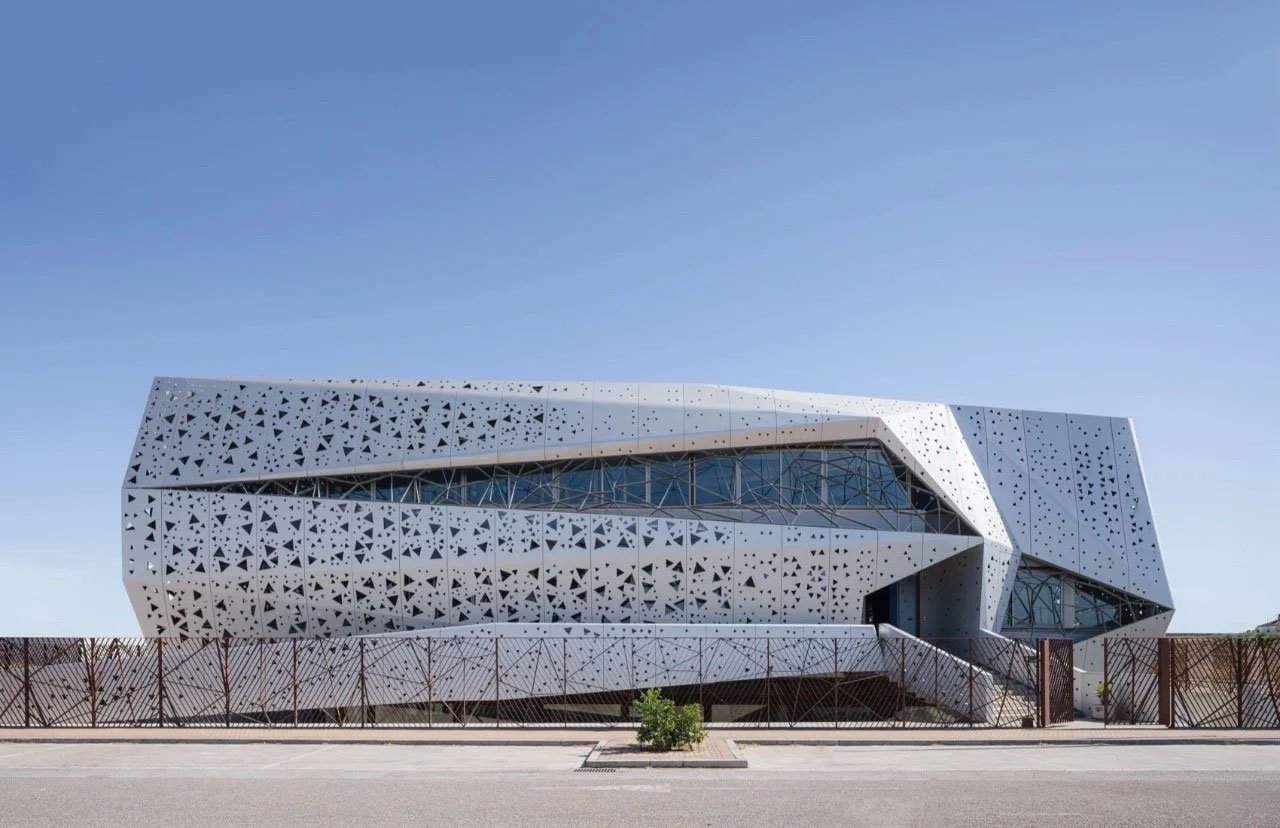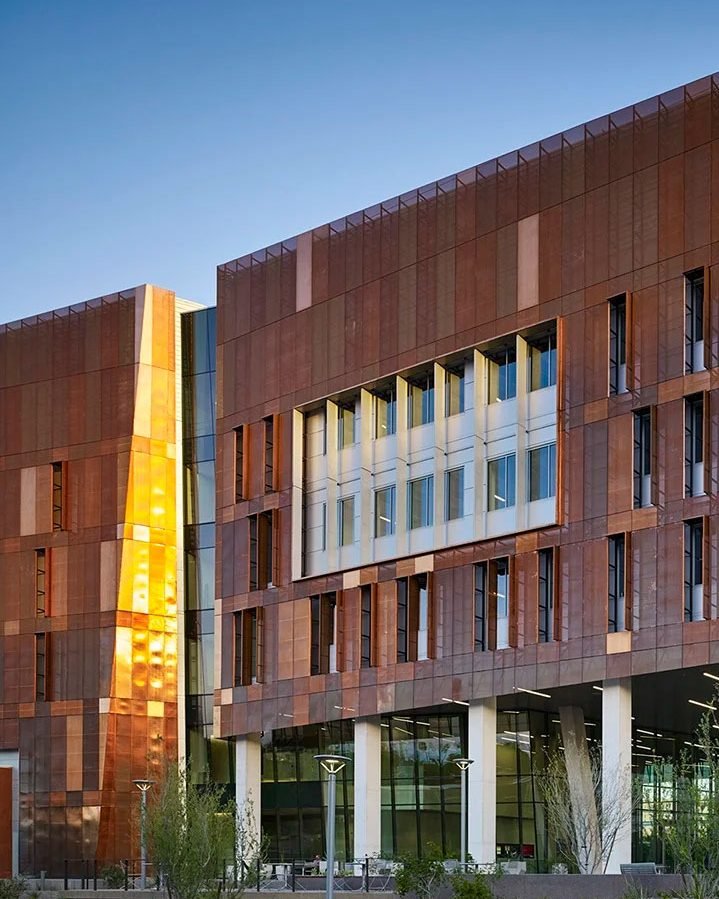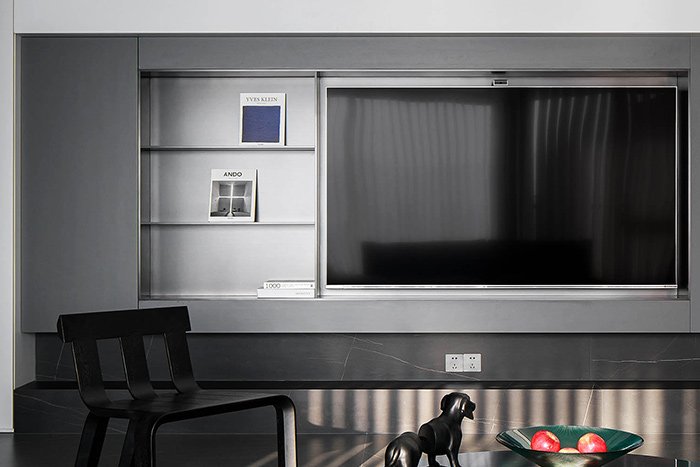The Art and Function of Architectural Perforated Metal in Modern Design
Table of Contents
In modern architecture, the boundaries between structure and artistry continue to blur. Designers now look for materials that fulfill both performance and aesthetic ambition. Among these innovations, architectural perforated metal stands out as a truly expressive medium. It combines durability, creativity, and freedom of design, allowing architects to manipulate light, ventilation, and visual rhythm with precision.
From perforated corten steel panels that age gracefully with a rust-like patina, to perforated copper sheets that bring luxury and warmth, every option transforms a building’s surface into a statement. The integration of perforated metal cladding and perforated facade systems not only enhances energy efficiency but also delivers distinctive visual impact.
Inside modern spaces, perforated steel ceiling designs provide acoustic balance and artistic flair. Supported by professional perforated sheet suppliers, these elements together shape the future of architectural expression, proving that modern construction values creativity just as much as strength.

Understanding Architectural Perforated Metal
Architectural perforation of metals serves as a bridge between art and structure by giving buildings characteristic identities while the functional requirements of ventilation, durability, and acoustic control are met. Before its diverse applications are looked into, it will be important to explore what makes perforated metal so valuable in the modern architectural landscape.
What Is Architectural Perforated Metal?
Architectural perforated metal can be defined as sheets of mechanically or digitally punched metals depicting patterns of holes or shapes. These holes are not used only for decoration but also for ventilation, acoustic control, and shading purposes. Such precision in perforation allows designers to work with light and shadow in a space, creating dynamic visual effects throughout the day. Normally, in architectural projects, perforated panels will be made of stainless steel, aluminum, copper, or weathering steel and will serve for façades, ceilings, and interior partitions. Reputable perforated sheet suppliers offer a wide range of perforation patterns-from uniform geometric designs to customized artistic motifs specifically tailored for each project.
Key Materials: From Corten Steel to Copper
Varieties of metal used create some remarkably different visual and functional elements in architectural perforation. Corten steel is a favorite due to the stunning, evolving ‘weathered’ look it provides for applications like perforated panel systems: a beautiful rustic yet elegant finish in its own right. The oxide layer Corten steel forms naturally prevents further corrosion, therefore making it a sustainable option for an exterior façade. Adding warmth and sophistication to a building’s design are perforated copper sheets. Copper develops a rich patina with age that further enhances its beauty and durability. Stainless steel and aluminum are often specified for large-scale commercial or institutional applications where high strength, light weight, and ease of maintenance are particularly advantageous.
Benefits in Architecture and Design
The beauty of architectural perforated metal lies in the duality of its purpose. Functionally, it enhances building performance by way of increased airflow, reduced heat gain, and controlled transmission of light. Aesthetically, it brings texture and visual depth to otherwise uninteresting surfaces, turning them into living façades. What is more, perforated metal contributes to acoustic comfort through sound absorption in interior spaces. If well-engineered, it contributes to energy efficiency and sustainability-perfectly embodying the modern design philosophy wherein art serves functionality.
Design Applications of Perforated Metal Cladding and Facades
The magic of perforated metal happens right where theory meets practice. It is versatile enough to find applications in both exterior and interior settings, blending protection with artistry. The material turns buildings into living, breathing structures that interact with their environment either as perforated metal cladding or an expressive perforated facade.
The Role of Perforated Metal Cladding
Perforated metal cladding protects buildings while defining their architectural character. This exterior skin protects the underlying structure from the weather, allows air to circulate around the building envelope, and admits daylight. Its flexibility enables architects to achieve minimalist or expressive facades by varying the pattern and color and by applying different finishes. Flat or curved, it can be mounted onto structural frames and combined with integrated insulation systems for added energy performance. Beyond protection, it also offers branding potential: patterns reflecting a company’s logo or cultural symbolism can meld identity with design integrity.
Innovative Uses of Perforated Facades
Modern designers are increasingly using perforated facades as statement pieces in urban architecture. These façades allow light to filter in gently, reducing glare while maintaining privacy and thermal control. At night, they transform into illuminated canvases that glow with ambient light, creating stunning cityscapes. Be it museums or hotels, shopping complexes, or municipal buildings, perforated façades bestow the right blend of transparency and protection. Many architects nowadays collaborate with perforated sheet suppliers to develop bespoke perforation patterns that speak to the narrative of each building.
Integrating Perforated Panels into Sustainable Design
Environmental sustainability has become a cornerstone of architectural innovation. Perforated panels naturally contribute to this movement, as by regulating sunlight they reduce artificial cooling needs, hence providing lower energy consumption. When made from recyclable materials like aluminum, steel, or copper, perforated systems are perfectly aligned with green building certifications. Besides, the use of powder-coated and eco-friendly finishes offered by manufacturers such as those in China comes with improved corrosion resistance by minimizing the ecological footprint.
Beyond Walls — Perforated Steel Ceilings and Interior Design
Besides their use outdoors, perforated metals have also found a special niche in interior design, adding structure, light, and texture to interior settings while enhancing both aesthetics and performance. Of these, perforated steel ceilings have become extremely popular in commercial and institutional settings.
Aesthetic and Acoustic Value of Perforated Steel Ceilings
Consider the ceiling to be the “fifth wall” in architecture, and perforated steel has redefined how that surface is perceived. Besides being decorative, this kind of ceiling improves sound absorption and reduces echo, and therefore can be perfect for offices, theatres, and public halls. Perforation may be fine and subtle or bold and graphic-looking, depending upon the design intent. By incorporating lighting systems behind the panels, designers can achieve mesmerizing light patterns which sometimes shift with ambiance.
Customizable Patterns for Unique Interiors
One of the strongest advantages perforated metals offer is customization. From geometric grids to abstract art, pattern varieties are endless due to CNC punching and laser-cutting technologies. These capabilities let interior designers create unique brand atmospheres by turning ceilings or wall panels into storytelling elements. Advanced perforated sheet suppliers now provide digital prototyping services whereby the client can preview patterns before going into production, ensuring design precision and visual harmony.
Durability and Maintenance Considerations
In applications indoors, perforated metal panels also provide functional benefit: they’re resistant to moisture, are easily cleaned, and will remain looking good for many decades. Used in heavy traffic areas of airports or shopping centers, for example, perforated steel ceilings fare better than conventional gypsum or wood products because of their strength and fire resistance. A correctly coated perforated panel needs very little maintenance, which minimizes the long-term cost to operate.




Working with Perforated Sheet Suppliers
Behind every successful architectural project, there is a strong supply chain. Including experienced perforated sheet suppliers offers consistent quality, precision manufacturing, and on-time delivery. Knowing how to work with such suppliers can make all the difference in project outcomes.
Choosing the Right Perforated Sheet Suppliers
The quality and reliability of the perforated sheet suppliers determine the result of any project dealing with architecture. It depends on the expertise of a supplier in the selection of materials, preciseness in perforation, and technology in finishing. Companies like JYF Metal in China specialize in architectural perforated metal systems-including cladding, facades, and ceiling solutions. They provide tailored fabrication and export services to clients all over the world while supporting both OEM and ODM customization.
OEM and Custom Fabrication Options
Professional suppliers often provide full-service solutions: from concept design and prototyping to cutting, folding, welding, and coating. OEM/ODM options allow architects to bring their unique design visions to life, ensuring that every project is both functional and distinctive. Customization may include hole shapes (round, square, hexagonal, or artistic forms), perforation ratios, and surface finishes like anodizing, powder coating, or PVD coloring. Working closely with experienced manufacturers ensures that structural requirements, such as wind load resistance and panel joint design, are properly addressed.
Global Market and Competitive Pricing
China has become one of the most competitive regions for perforated metal manufacturing due to advanced production technology and efficient logistics. Leading perforated sheet suppliers such as JYF Metal offer a combination of competitive prices, high customization capabilities, and consistent export quality. Their production lines use automated laser cutting and CNC punching systems, ensuring tight tolerances and design precision. For international clients, partnering with such suppliers not only guarantees cost efficiency but also access to patented fabrication techniques and innovative design support.
Conclusion
From timeless perforated corten steel panels to modern perforated steel ceilings, architectural perforated metal continues to redefine the boundaries of design. It is both an artistic statement and a high-performance building solution. With the support of professional perforated sheet suppliers and customizable fabrication technology, architects and developers can transform metal into living architecture — breathing with light, air, and rhythm. To explore customizable perforated metal cladding and façade solutions for your next project, visit JYF METAL for more inspiration and professional support.
You Might Also Like
Please Share This
Recent Posts
- Stainless Steel Lettering: Elevate Your Interior and Branding Design
- The Art and Function of Architectural Perforated Metal in Modern Design
- Enhancing Outdoor Spaces with Corten Steel Landscape
- Transforming Outdoor Spaces: The Beauty and Function of Metal Privacy Screens for Patios and Gardens
- The Unique Charm of Hammered Texture in Modern Metal Design



